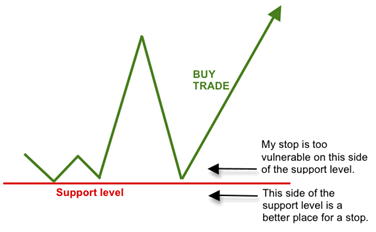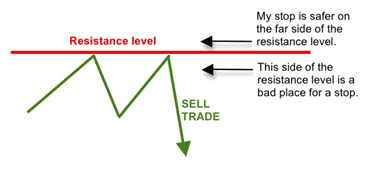 To me, there are two ways of looking at the budget this week …
To me, there are two ways of looking at the budget this week …
We can worry about what the Chancellor is “doing for us” (or more likely “doing to us”).
Or we can take charge of our finances, with high-return tax-free investments that George Osborne can’t touch.
My advice to anyone would be to take the proactive approach.
Intelligent stop losses
Often with a trading strategy we have a fixed idea of how far away we want to place our stop loss from our entry point. While it’s a good idea to know roughly the sort of movement you’re going to expect from whatever instrument you’re trading – a degree of flexibility here will serve your trading very well.
What we need to do is avoid areas of resistance and support getting in the way of our stop losses.
Not only do prices bounce off these levels – they are also drawn to them like magnets.
Why?
Simply because these areas are magnets for traders’ stop losses and profit targets.
So, put your stop loss on the wrong side of an area off support or resistance, and you could be massively increasing the chance of your trade getting stopped out.
For example, if I’m in a buy trade, and some weakness comes into the market, that price will be drawn strongly towards support levels, because that’s where traders will have placed their orders to be filled, and that’s where the price (quite literally) will find its support.

I really need to tuck my stop loss safely on the far side of the support level.
Likewise, in a sell trade, if some strength comes into the market, any resistance level will exert a magnet-like pull on the price. If my stop loss is on the wrong side of it – I’m much more likely to suffer a whipsaw trade.

Widening your stop without increasing your risk
Of course, we can’t go around widening our stop losses willy-nilly.
If we start looking at our charts and just sticking them where we fancy, we will quickly come unstuck.
Widening your stop, without adjusting the rest of your trade accordingly, can set your risk levels off-balance.
If you’re trading with a £5 stake and a 20-point stop loss, you’ll be risking £100.
Up that stop loss to 25 points – and you’ve just increased your risk levels by 25%.
If you’re increasing your stop distance, you’ll need to reduce your stake accordingly.
So, if your risk level is £100 on a trade, and your new stop distance is 25 points – you’ll be staking at £4 /point.
Don’t try to fight the markets
I’m sorry if it sounds like I’m teaching you to suck eggs here.
But I know myself that I can get stuck in my ways, and have my expectations of how far I want my stop losses and profit targets from my entry levels.
I may think I’m doing this because I know the instruments I’m trading so well – but the truth is probably more that I’ve fallen into habits and assumptions about how the markets will behave, rather than genuinely looked at the evidence.
We can’t expect the markets to behave according to our plans, any more than I can expect it not to rain whenever I light up the barbeque this summer.
Instead of expecting the markets to fit in with our expectations, we should be a bit more flexible, and try to adapt ourselves around the markets.
That way, we’re likely to be a good deal more successful.
